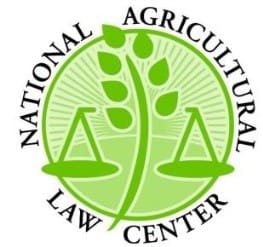Written by: Amie Alexander, JD/MPS Candidate, William H. Bowen School of Law
The United States District Court for the Eastern District of Missouri denied defendant Monsanto’s motion for partial summary judgment on May 8, 2018. The summary judgment motion’s denial leaves the issue of foreseeability that third party farmers who had planted dicamba-tolerant seed would unlawfully spray old dicamba formulations in the absence of a corresponding herbicide to a jury.
Background
The motion for partial summary judgment was before the Court in the case of Bader Farms, Inc. v. Monsanto Co. Plaintiffs in this action claim defendants Monsanto and BASF conspired to create an “ecological disaster” when Monsanto released dicamba-tolerant seed with no corresponding dicamba herbicide before the herbicide’s EPA approval. Plaintiffs argue that as a result, farmers sprayed an older dicamba formulation sold by BASF known to be prone to drift, which damaged neighboring crops and forced farmers to plant Monsanto’s dicamba-tolerant seeds for defense.
In response to Monsanto’s December 2016 motion to dismiss a previous version of the complaint, the Court previously noted that the unlawful spraying of old dicamba formulations by third party farmers was an intervening and superseding cause of the plaintiff’s harm. The Court further observed that even if the third party farmers’ unlawful spraying was foreseeable, this foreseeability was negated by the dicamba-tolerant seeds’ product warning labels. In considering Monsanto’s motion for summary judgment, the Court deferred a ruling on the motion to give plaintiffs more time to respond to defenses based on the bag warnings, treating the motion to dismiss as a motion for summary judgment. This decision has been summarized in a previous blog post here.
Plaintiffs later moved to amend their complaint and asked the Court to vacate the earlier order treating Monsanto’s motion to dismiss as a motion for summary judgment, which the Court granted. Monsanto then moved to partial summary judgment on claims that allege damage in 2015 and 2016, which is the motion before the Court being addressed here.
Court’s Discussion
The Court begins by addressing the uniqueness of this suit as a products liability claim – unlike traditional products liability and negligence cases, the harm claimed is not a result of products manufactured or purchased by the defendant. Rather, the harm comes as an allegedly foreseeable result of a third parties’ misuse of the dicamba-tolerant seed.
Monsanto has argued that the third parties’ unlawful spraying of old dicamba formulations was an intervening and superseding cause of plaintiffs’ damage that broke the chain of proximate causation. However, the Court stresses that the plaintiffs’ claim is actually that the third parties’ foreseeable misconduct is itself part of the chain of proximate cause. Case law holds that a third parties’ misconduct cannot be deemed in intervening and superseding cause if it was foreseeable.
Upon consideration of the uniqueness of this case, the Court determined that the issue of foreseeability should be left to a jury, and that the plaintiffs claims for damage in 2015 and 2016 are enough to overcome the summary judgment motion. Therefore, Monsanto’s motion for partial summary judgment was denied.
